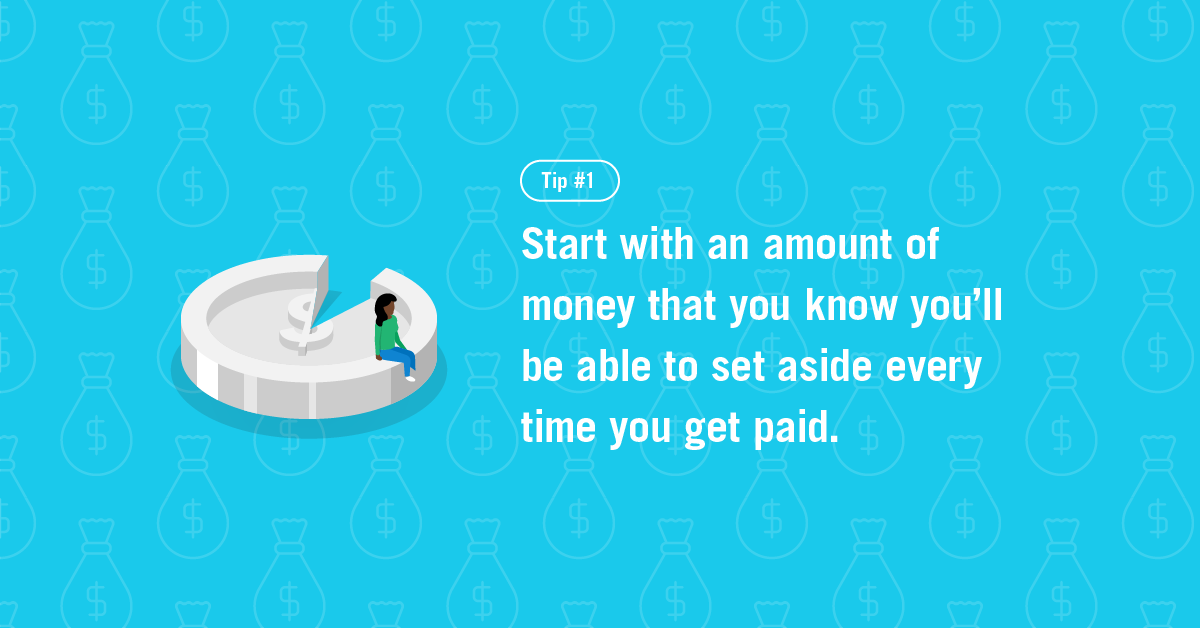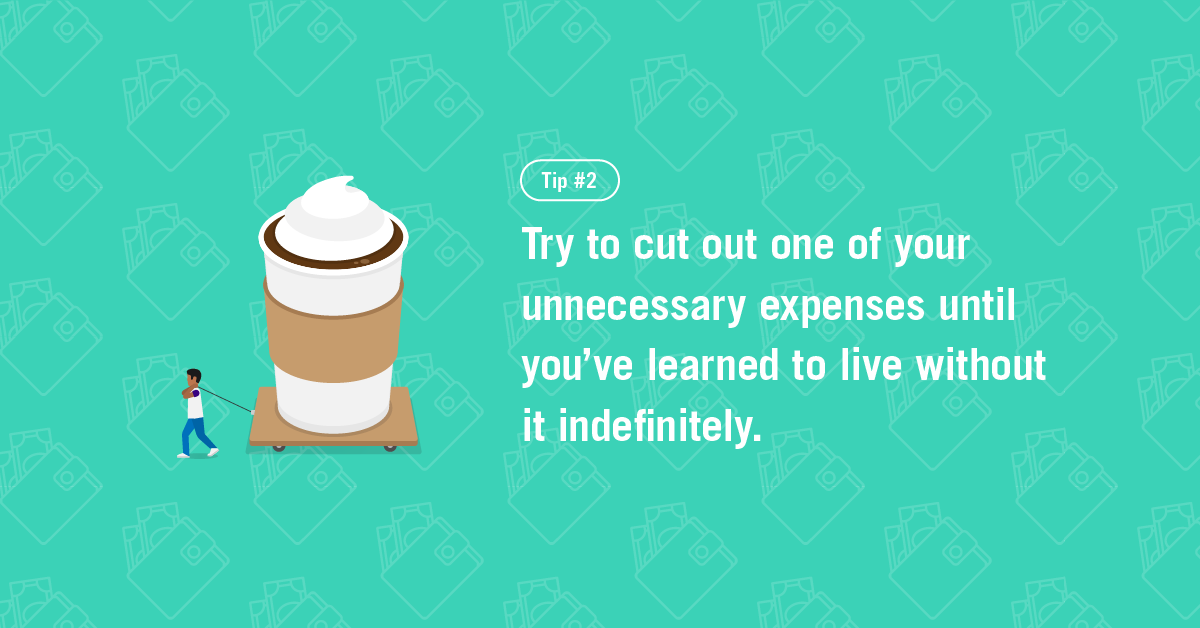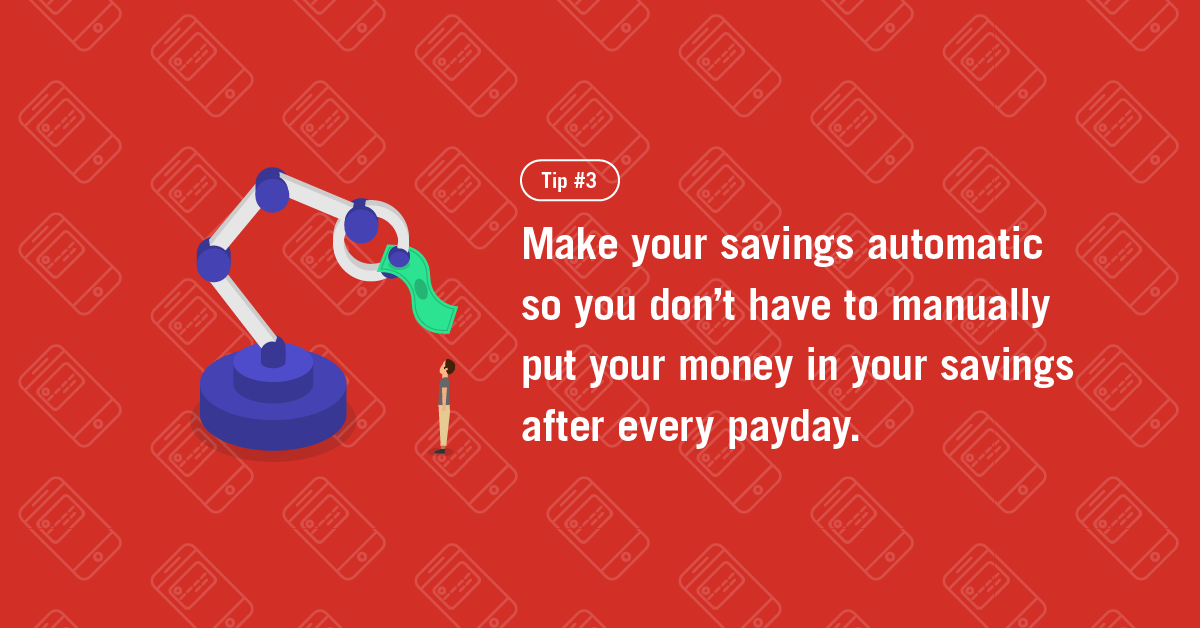Are you just getting started with saving, or do you seem unable to save any money no matter how hard you try? You’re not alone. But building up your savings doesn’t have to be a constant struggle. It just takes a game plan that you can stick to.
A great goal to start with is saving up $1,000. It’s partly just a psychological milestone, but there’s a lot to be said for having four-figure savings. It’s enough to cover many big expenses — say, a new set of tires or unexpected dental work — and yet the average person can easily save up that amount within a year if they’re diligent.
Here are 3 simple tips to help you save your first $1,000:
Tip #1: Start small

Many people who try to start saving fail because they try to do too much, too quickly. If you’ve never successfully saved before and all of a sudden try to put 20% of every paycheck into a savings account, you may discover that’s not a realistic goal.
Instead, start with an amount of money that you know you’ll be able to set aside every time you get paid. It could be a seemingly small amount — $20 or so if that’s all you can realistically afford — but the point is that you’ll be able to do it every single time without fail. After all, if you get paid biweekly and save just $20 out of each paycheck, then you’ll have more than $500 set aside in a year. That’s a better emergency fund than about half of all American adults have.
Tip #2: Cut back on extras (but remember tip #1)

I know, I know — you’re probably tired of being told to skip the morning latte. And, in full honesty, I’m a Starbucks regular myself and have no plans to give it up.
However, when you’re trying to start saving, it’s a good time to figure out where you can cut back. For example, my wife and I added up how much money we spent dining out during the previous month, and then we decided to skip one restaurant meal each month. If your goal from step one is to save, say, $50 per month, then skipping one dinner at a restaurant could make that possible.
Having said that, still remember to start small. Trying to trim too much out of your budget right away is a good way to get frustrated and burn out. Don’t try to stop eating out, stop buying new clothes, stop going to the movies, and cancel your cable all at the same time. Try to cut out one of your unnecessary expenses until you’ve learned to live without it indefinitely. Then think about targeting the next cost.
Tip #3: Automate the process

My final suggestion is to make your savings automatic so you don’t have to manually put your money in your savings after every payday, and you don’t have an opportunity to spend the money before it reaches your savings account. It’s easy to forget to transfer that money, and it’s even easier to decide to skip it “just this once.”
So set up an automatic transfer of whatever amount you decided to save from each paycheck. This way, you won’t even miss the money, because you’ll never have it in your checking account in the first place. And once it transfers, leave it alone. You’ll be on your way to saving your first $1,000 before you know it.
Don’t stop there!
Once you’ve put away your first $1,000, don’t stop. Instead, use your newfound savings skills as motivation to do even better. Experts say that you should have about six months’ worth of expenses set aside in an emergency fund, and that doesn’t include the money you save and invest for retirement, college expenses, and other personal financial goals.
The bottom line is that saving should be a lifelong process that’s continuously improving. Once you’ve hit one milestone, set another. Before long, you’ll be on the road to financial freedom.
This article was written by Matthew Frankel from The Motley Fool and was licensed from NewsCred, Inc. Santander Bank does not provide financial, tax or legal advice and the information contained in this article does not constitute tax, legal or financial advice. Santander Bank does not make any claims, promises or guarantees about the accuracy, completeness, or adequacy of the information contained in this article. Readers should consult their own attorneys or other tax advisors regarding any financial strategies mentioned in this article. These materials are for informational purposes only and do not necessarily reflect the views or endorsement of Santander Bank.
![]()



